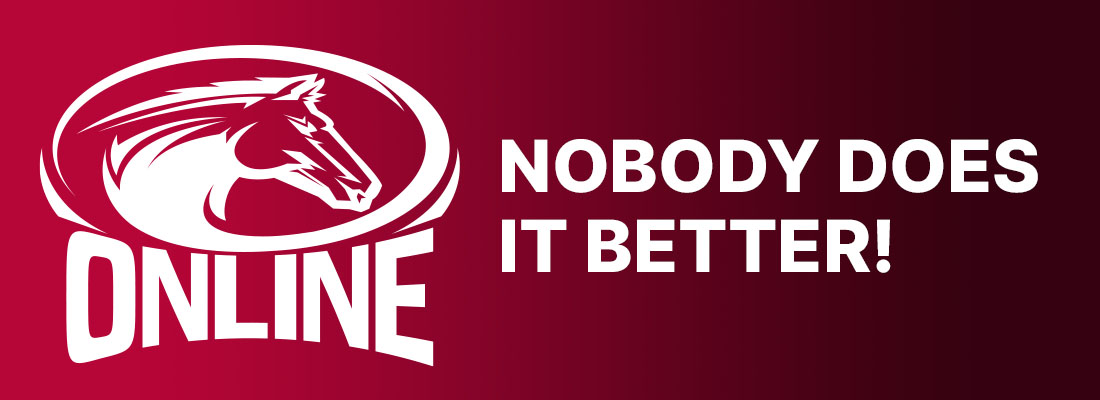The Meadowlands seeks to maintain early season handle momentum
Starting next weekend, The Big M will offer a “per starter purse” for its opens.
by Brett Sturman
With a competitive purse structure and favorable set of racing conditions, The Meadowlands has seen remarkable gains in handle this winter when compared to the same period in recent years. The reason, of course, is due almost exclusively to field size quantity over race quality, the latter of which is nearly meaningless at this point. Based on recent successes, maybe even being disproved too is the importance (or lack thereof) of driver quality. Heading into March, can The Meadowlands maintain its field sizes and carry its momentum?
First, to state how high handle has been this winter, last year the track would seldom, if ever, get to $3 million in handle on a Friday night. This year it’s become commonplace. All recent Fridays, including this past one (Feb. 24), have eclipsed that benchmark, and the card from last Saturday (Feb. 18), was less than $200,000 away from reaching $4 million.
Taking a page out of the book from a concept introduced at Woodbine Mohawk Park (WMP), The Meadowlands announced this week that they will begin offering a “per starter purse” for its opens beginning next weekend. Under that purse structure of $4,500 per horse in an open 1 and $3,500 per horse in an open 2, fuller fields would reflect larger purses currently offered. For example, if an open 1 were to fill 10 horses, then that race would go for a purse of $45,000 ($4,500 x 10), which would reflect an amount of $13,500 greater than the current open 1 purse being offered. Factoring in Canadian foreign exchange rates, WMP’s offering of $6,000 per starter is on par with The Meadowlands.
In its press release announcing the structure, Meadowlands’ owner Jeff Gural cited the need to have the opens fill as a means to accommodate the higher quality horses soon returning to the races and allow races for them to acclimate towards later stakes races. That is one component of it, but I’m certain that another factor is that the increased handle that more full open fields will drive.
Despite the highest quality of racing during the week, the higher classes draw the lowest handle due to their smaller field sizes. On Feb. 18 for example, the last race card to have an open (trot), the total race pool of $158,027 was the lowest across the entire card. The race immediately preceding the open handled $310,000, and the race immediately following the open, a lower-level N/W $5,000 condition, handled $262,000. The difference being that both of those higher handling races had 10-horse fields. The open (won by a horse who hadn’t yet trotted a flat mile in an actual race this year), had only seven horses.
By being able to entice fuller open fields by offering purses in excess of $10,000, what the opens currently go for, it could solve both of Gural’s concerns at the same time: being able to offer stakes-prepping horses a place to race and bring up handle on the lower handling races.
The first test to The Meadowlands’ handle has come earlier than normal these past couple of years as Pocono now opens their season in February, a change from their previously established March start date. It’s only been two weekends thus far of head-to-head competition for the population of horses between The Meadowlands and Pocono, but, so far, The Meadowlands is holding its own.
This past Friday, The Meadowlands had 13 races and 121 entries prior to scratches. Last night (Saturday, Feb. 25), The Meadowlands was still able to card its usual 14-race card consisting of 130 total entries, with nine of those 14 races being full 10-horse fields. The result is a sustained $3+ million handle (though that’s a bit of a prediction since this column was written before Saturday’s card began).
In looking at the Pocono entries for Saturday and Sunday this weekend, most of the horses being used to fill those cards are not horses who have raced regularly at The Meadowlands. While there are some Meadowlands’ horses throughout the card to be sure, far more horses being used to populate Pocono are coming in from Yonkers, and then a mixture of other tracks. As an interesting footnote to that is Yonkers still having no problem evidently of carding 11-races a night, most with full 8-horse fields, which is even more races than they were carding for some nights in January. Is there a resurgent horse population?
The next challenge to The Meadowlands’ full field and in turn higher handle, will come in just over a month when Harrah’s Philadelphia reopens its season. There will be an impact on The Meadowlands once that happens, but to what extent? By building up its brand this winter and taking proactive measures to shore up field sizes where it’s currently weak, perhaps the impact to fill races and race cards in the spring could be minimal.

















